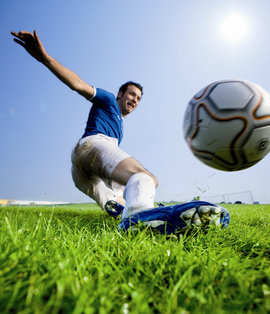Innovations in grass eliminate the need for artificial grass

In the Netherlands, a heated discussion is going on about the potential health risks of artificial grass because of its rubber infill. Scientists found reasons to believe that this infill could increase the risk of cancer. Following this discussion, it has become more than relevant to focus on the current state of affairs in natural grass. An awful lot of research has been carried out in the natural grass industry the past few years, and many innovations have been introduced. What’s the outcome of all that research? With the proper maintenance, the latest natural grasses offer an excellent and cheaper alternative to artificial grass.
More playing hours
Natural grass has improved tremendously in the field of wear tolerance the past few years. Whereas sports pitches could often be used for only 250 hours a year in the past, a pitch sown with the latest grass varieties can now tolerate at least 450 hours of playing.
Better for the environment
Natural grass is also a good choice as far as the environment is concerned. With proper upkeep, natural grass is a sustainable, environmentally and CO2 friendly product. For example, natural grass binds greenhouse gases from the atmosphere in the soil, exchanging them for oxygen. A grass seed mixture may have a strong influence on the turf’s sustainability. Nowadays, there are grass varieties with characteristics such as excellent disease resistance, drought tolerance and utilisation of minerals. These characteristics enable savings in, for example, pesticides, water and fertilisers.
Lower costs
Creating an artificial grass pitch will cost around 400,000 euros. A pitch of natural grass is much cheaper, involving only about 80,000 euros. There’s also a large difference in the annually recurring costs. The costs involved in the upkeep and depreciation of a natural grass pitch amount to about 14,000 euros a year, and those of an artificial one to around 42,000 euros.
The natural choice
In short, natural grass scores high on all fronts. And then there’s also the way in which natural grass is perceived and experienced: real grass smells and feels good, many sports enthusiasts prefer playing on natural grass, and it also causes fewer injuries. All in all, it eliminates any need for artificial grass.

